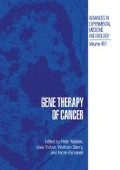Abstract
Lymphocytes recovered from human tumors or the peripheral blood of patients with advanced malignancies are functionally compromised. Abnormalities in signaling via the T cell receptor (TcR) in T cells and FcγRIII in NK cells obtained from cancer patients include significantly decreased expression of the receptor-associated ζ chains, decreased Ca++ flux as well as impaired kinase activity following triggering with anti-CD3 or anti-CD 16 antibodies, respectively, and altered expression of downstream protein tyrosine kinase p56lck. Some of these defects were demonstrable in situ, in T cells infiltrating tumor tissues. Post-translational modifications of the ζ protein were responsible for its low levels, since near normal levels of mRNA were present in situ in the patients’ T cells. LNL in tumor-involved LN or mononuclear cells in solid tumors were shown to contain numerous apoptotic (TUNEL+) CD3+ lymphocytes. Co-incubation of normal activated T cells or Jurkat cells with tumor targets (either freshly isolated or tumor cell lines) induced degradation of the ζ chain as well as apoptosis in a proportion of lymphocytes. Both fresh and cultured human tumors were shown to express FasL, and T cells in tumors were found to be Fas+. Therefore, the Fas-FasL pathway is, at least in part, responsible for signaling defects and apoptosis induced by the tumor in lymphocytes found in its milieu. Preliminary data indicate that immunotherapy with cytokines might normalize ζ expression in T cells and partly restore their antitumor functions.
Access this chapter
Tax calculation will be finalised at checkout
Purchases are for personal use only
Preview
Unable to display preview. Download preview PDF.
Abbreviations
- TIL:
-
tumor-infiltrating lymphocytes
- TcR:
-
T-cell receptor
- SCCHN:
-
squamous cell carcinoma of the head and neck
- PBL-T:
-
T cells isolated from peripheral blood lymphocytes
- I-LNL:
-
lymphocytes recovered from tumor-involved lymph nodes
- MFI:
-
membrane fluorescence intensity
- PMA:
-
phorbol myristic acid
- PTL-p:
-
proliferating T lymphocyte precursors
- LDA:
-
limiting dilution assay
- TcR:
-
T cell receptor
- TIL:
-
tumor-infiltrating lymphocytes
- TUNEL:
-
terminal deoxynucleotidyl transferase-mediated dUTP nick end-labeling
References
TL Whiteside, 1993: Tumor-Infiltrating Lymphocytes in Human Malignancies. R.G. Landes Co., Austin, Texas.
TL Whiteside, S Miescher, J Hullimann, V Von Fliedner, 1986: Phenotyping and limiting-dilution analysis of T-lymphocytes infiltrating human solid tumors. Int. J. Cancer 37, 803–811.
Y Gavrieli, SA Sherman, Ben-Sasson, 1992: Identification of programmed cell death in situ via specific labeling of DNA fragmentation. J. Cell Biol. 119, 493–501.
H Rabinowich, M Banks, TE Reichert, et al, 1996: Expression and activity of signaling molecules in T lymphocytes obtained from patients with metastatic melanoma before and after IL-2 therapy. Clin. Cancer Res. 2, 1263–74.
DS Heo, CH Snyderman, SM Gollin, et al, 1989: Biology, cytogenetics and sensitivity to immunological effector cells of new head and neck squamous cell carcinoma lines. Cancer Res. 49, 5167–75.
P Matzinger, 1991: The JAM test. J. Immunol. Methods 145, 185–192.
H Rabinowich, TE Reichert, Y Kashii, MC Bell, TL Whiteside, 1997: Lymphocyte apoptosis induced by Fas Ligand-expressing ovarian carcinoma cells: implications for altered expression of TCR in tumor. Submitted.
TE Reichert, H Rabinowich, JT Johnson, TL Whiteside, 1997: Human immune cells in the tumor microen-vironment: mechanisms responsible for signaling and functional defects. J. Immunother. In Press.
J O’Connell, GC O’Sullivan, JK Collins, F Shanahan, 1996: The Fas counterattack: Fas-mediated T-cell killing by colon cancer cells expressing Fas ligand. J Exp. Med. 184, 1075–82.
Author information
Authors and Affiliations
Corresponding author
Editor information
Editors and Affiliations
Rights and permissions
Copyright information
© 1998 Springer Science+Business Media New York
About this chapter
Cite this chapter
Whiteside, T.L. (1998). Immune Cells in the Tumor Microenvironment. In: Walden, P., Trefzer, U., Sterry, W., Farzaneh, F., Zambon, P. (eds) Gene Therapy of Cancer. Advances in Experimental Medicine and Biology, vol 451. Springer, Boston, MA. https://doi.org/10.1007/978-1-4615-5357-1_27
Download citation
DOI: https://doi.org/10.1007/978-1-4615-5357-1_27
Publisher Name: Springer, Boston, MA
Print ISBN: 978-1-4613-7444-2
Online ISBN: 978-1-4615-5357-1
eBook Packages: Springer Book Archive

